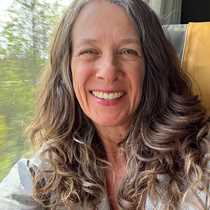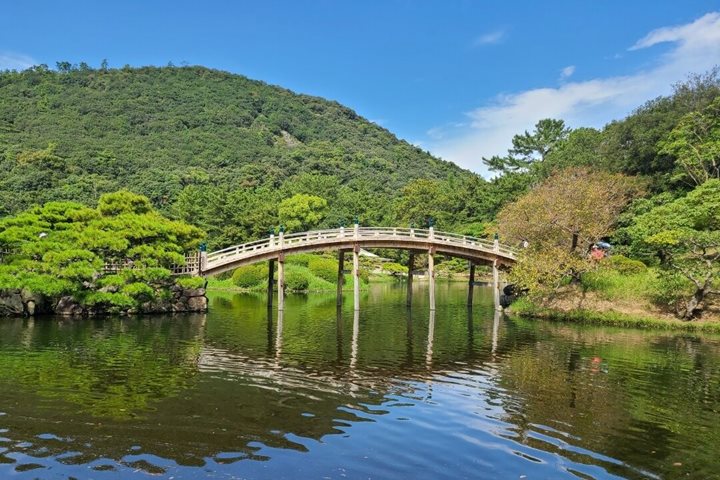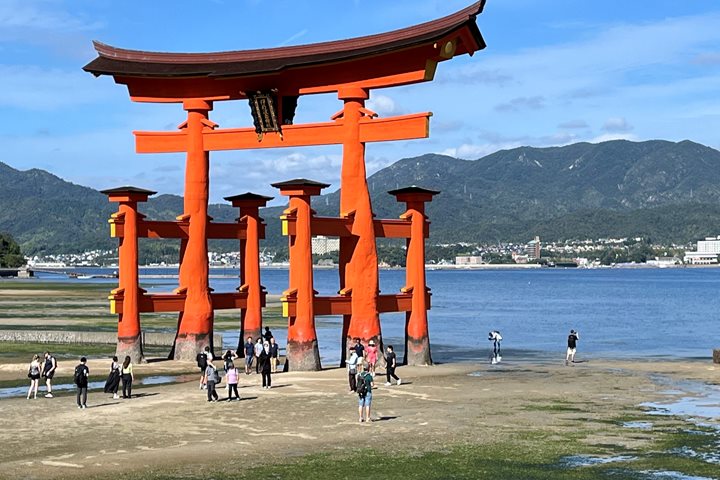We awoke as National Geographic Resolution settled off the coast of Miyajima Island in Hiroshima Bay. As Zodiacs carried us through the early morning light, we passed by bamboo rafts supporting cultivated oysters scattered throughout the bay; once ashore, we set off for our island tour of the sacred island of Miyajima.
The tour began with our first glimpse of the infamous vermillion torii gates, marking the watery entrance to the lovely Itsukushima Shrine. Amidst a rising tide, the gates looked like they were floating in the sea and formed a breathtaking backdrop to the shrine. As we wound our way along the massive-planked boardwalk past enormous lion dogs, an ancient Noh stage, and monks selling amulets and fortunes, our guides explained some of the many purification rituals and symbolic design features found in Shintoism. The shrine is said to house the kami, or deities, Ichikishima, Tagori, and Tagitsu, all goddesses of the sea.
After exiting Itsukushima, we continued to another amazing site, Daisho-in Temple, at the foot of sacred Mount Misen. Daisho-in dates back to the 12th century and belongs to the Shingon sect of Buddhism. With steps that rose higher and higher into the mountain, each hall or hidden path we uncovered was more enchanting than the last – from 500 rakan statues, all wearing knitted caps and different facial expressions, to a dimly lit cave containing 88 Buddhist icons, to staircases full of spinning sutra-wheels, the temple was an absolute delight.
After lunch on board, we made our way to nearby Hiroshima for the afternoon. In the shadow of the A-Bomb Dome, one of the few buildings left standing in the city centre following the explosion, our guides led us through the Peace Memorial Park and explained the mission of the park and neighbouring museum – to pass on the message of peace and urge us to abolish nuclear weapons once and for all. One especially moving part of this tour was a visit to the Peace Monument, where we donated strings of paper cranes we made the previous evening in honour of Sadako Sasaki, the 12-year-old bomb victim who began a paper crane-folding tradition that persists to this day.
Inside the museum, photographs and dioramas showed the city before and after the bomb was dropped, providing a sense of the massive scale of physical destruction. Other photos, relics, and most poignantly, the stories of survivors, illustrated the devastating effects of the bomb’s intense heat and radioactive fallout. While a powerful indictment against the use of such weapons, the Peace Memorial Museum was more than a depressing gallery of Hiroshima’s tragic past. It was also an important symbol of hope and resilience and a demonstration to the world of the recuperative power of the human spirit as the citizens of the city have worked together to rebuild and recover.
Once back on the ship, we settled into another peaceful evening on board. After dinner, Amy Loewen presented a lecture entitled, “Kawaii! Why is Japan so Cute?” to end another great day.







